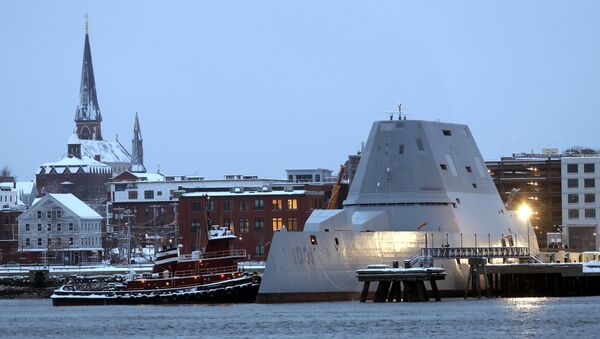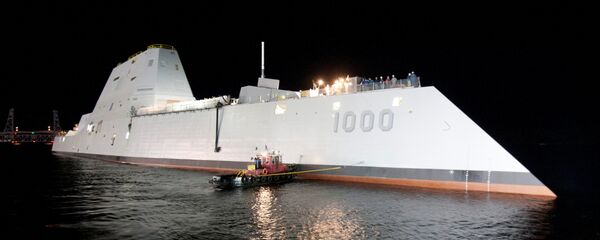A Zumwalt-class destroyer, the Michael Monsoor, named for a Navy SEAL who fell on a grenade to save his fellow soldiers, has had one of its two main turbines — similar to those that drive the Boeing 777 jetliner — swapped out in a delicate operation described by a Bath Iron Works spokesperson as a "pretty interesting engineering evolution."
Completed in August, the carefully engineered swap saw one of the ship's two 15-ton Rolls-Royce marine turbines lifted and oh-so-slowly maneuvered out of the bowels of the 15,000-ton boat, replaced by an entirely new motor.
Taking out the huge engine and replacing it in an already completed but as-yet-incomplete destroyer required going through a "number of twists and turns," according to the shipyard spokesperson, cited by Defense One.
During earlier sea trials the boat's builders recorded unusual vibrations and discovered later that something had come loose in the engine bay and fallen into one of the turbines' rotor blades, causing a small amount of damage. The turbine remained functional but the US Navy — on recommendation from the builders — chose to replace rather than repair the massive motor.
The Monsoor and its counterpart — the first stealth destroyer Zumwalt — will be joined by the #3 stealth frigate, the Lyndon B. Johnson, once it is completed, to make a three-boat class distinguished not only by its unusual shape but also by the troubles that have plagued the expensive 2001 design program from the start.
The original Zumwalt program called for a 32-ship fleet but has since been pared back to just three at some $7.5 billion apiece, following technological controversies, cost overruns and the changing face of naval warfare.



